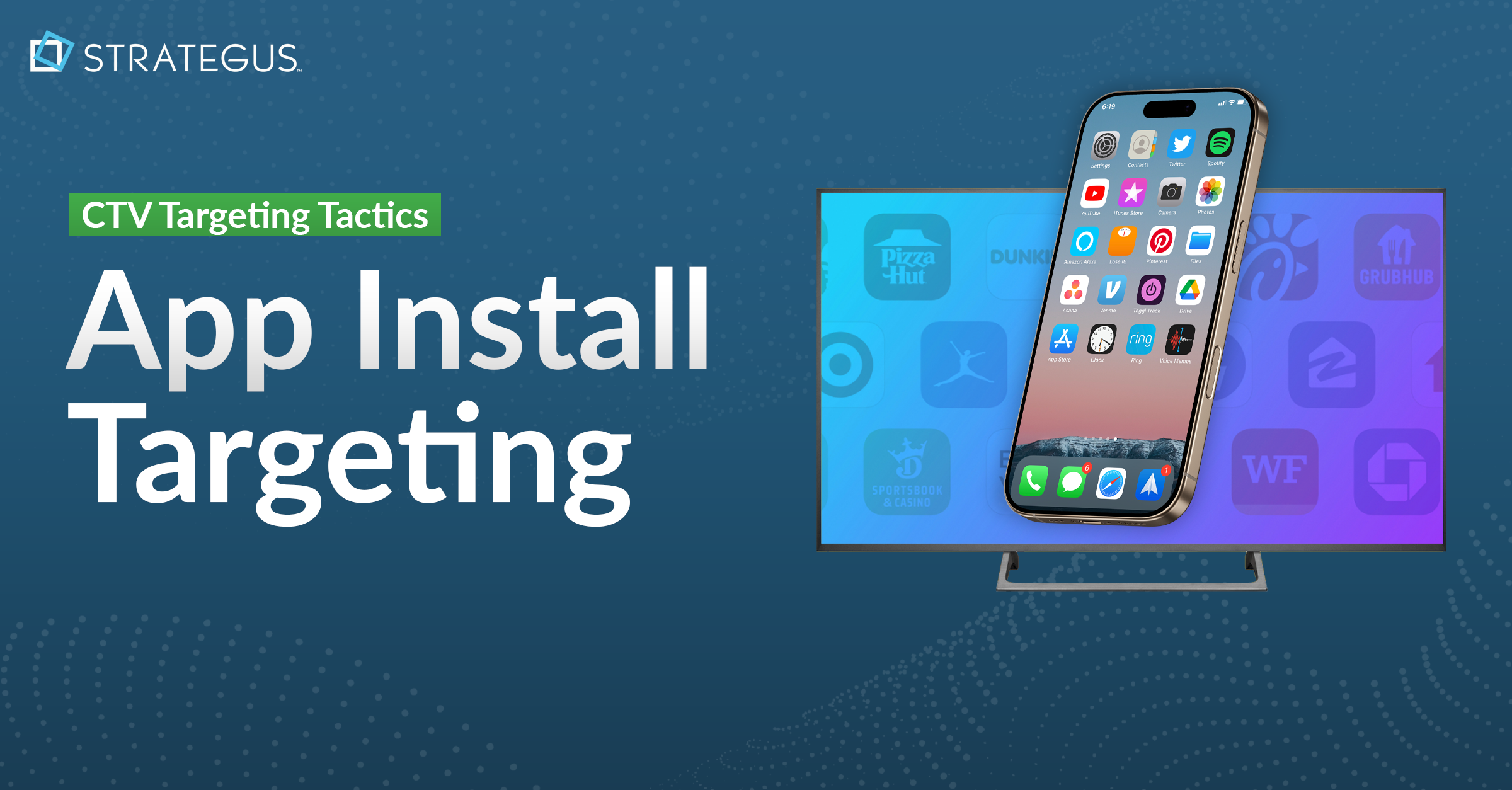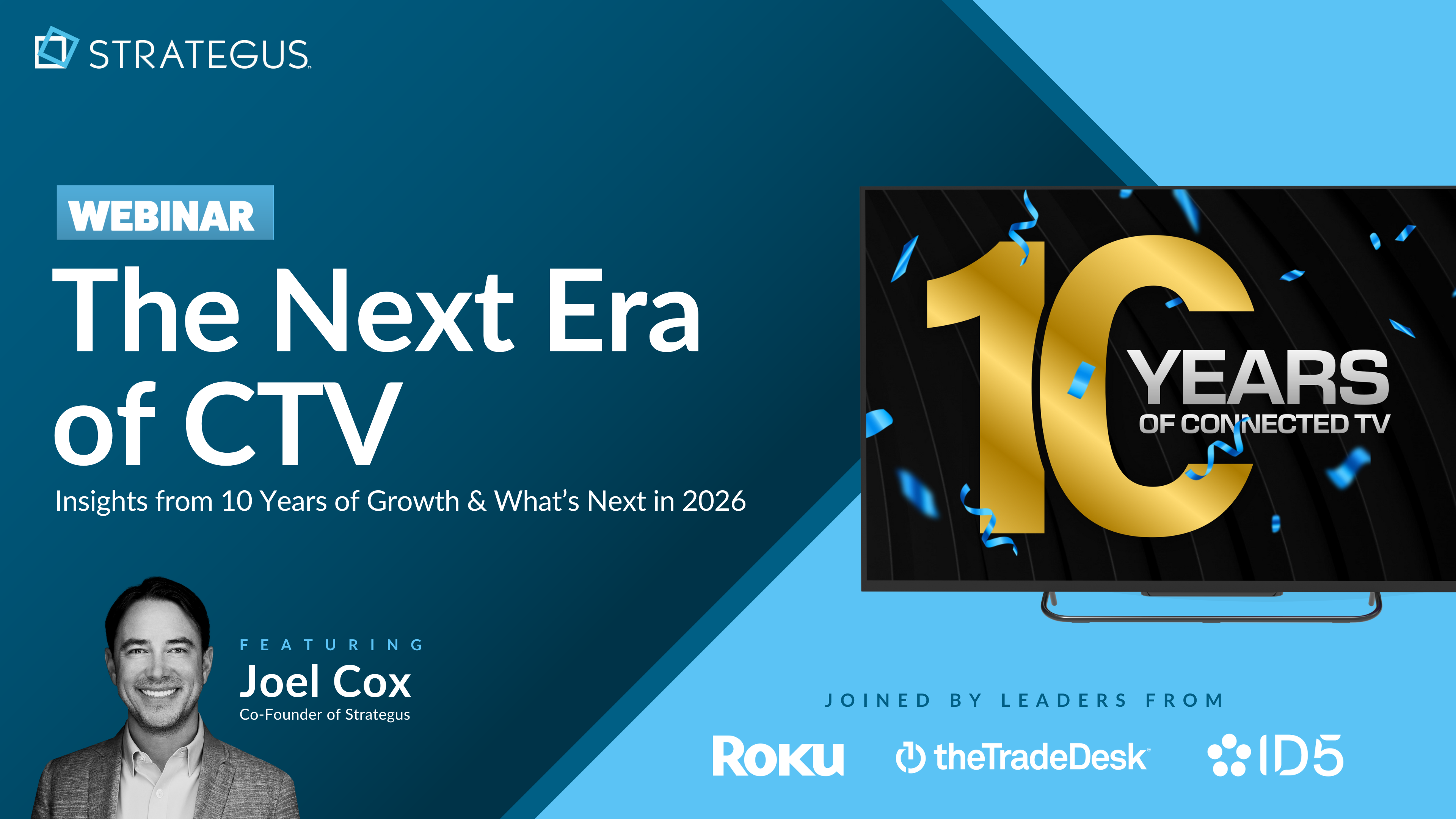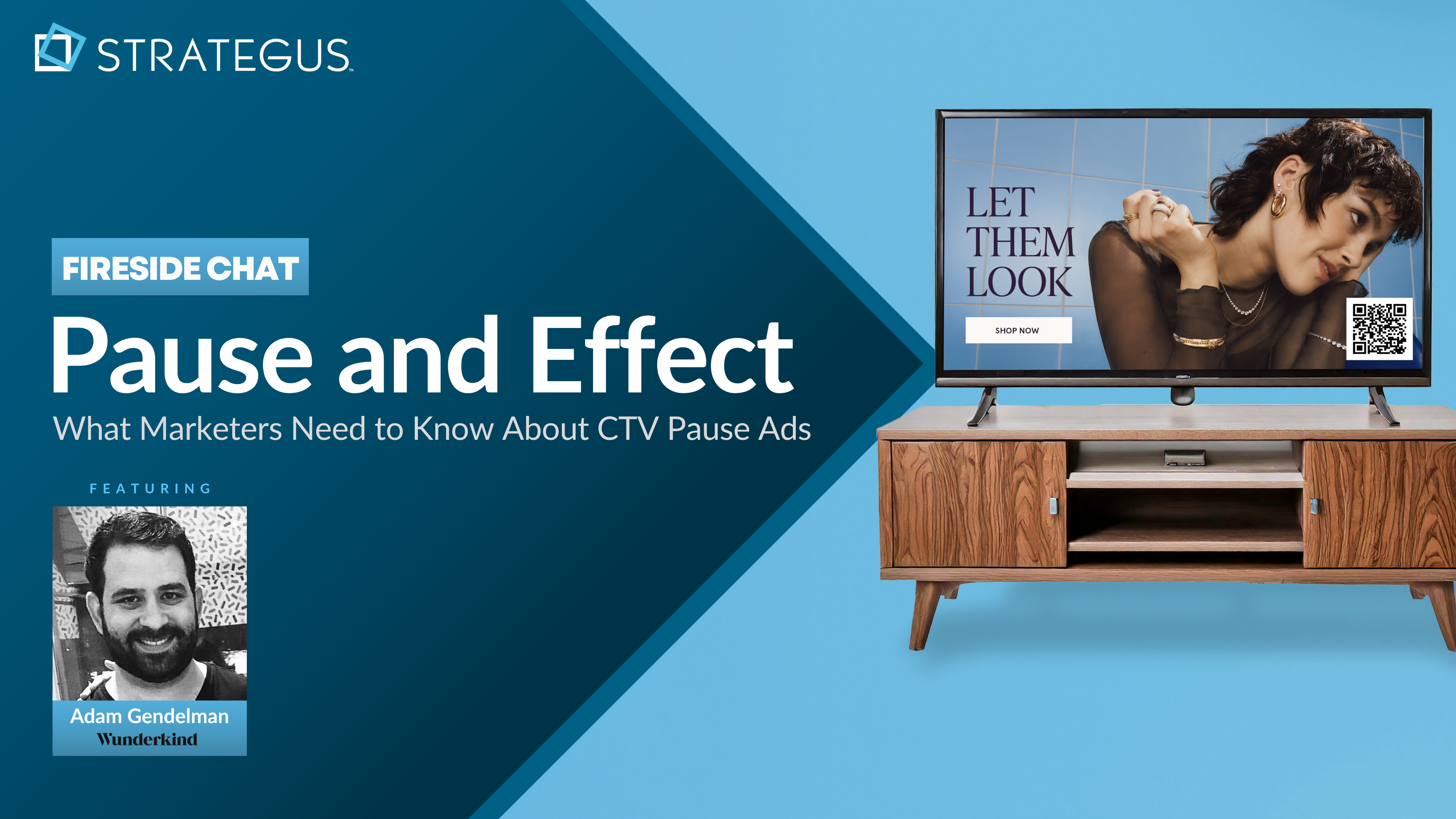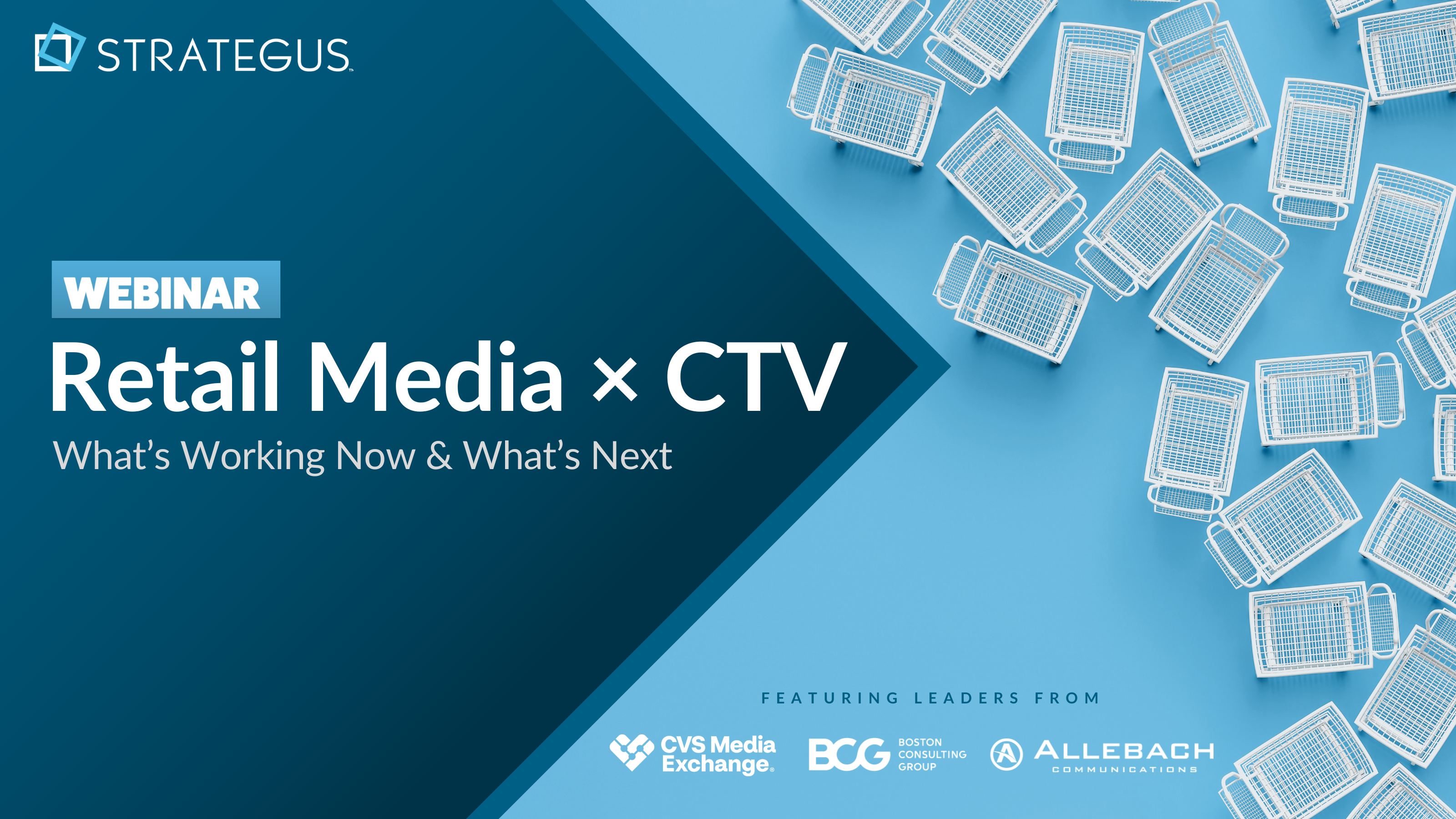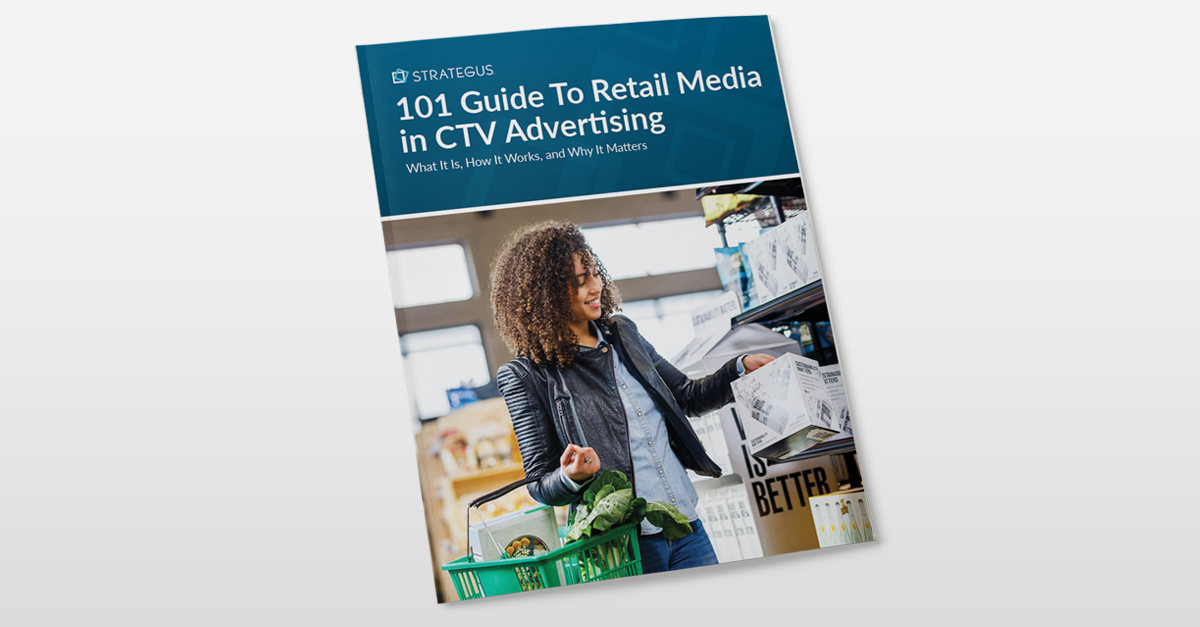- Home
- Strategus Blog
- First-Party vs Third-Party Data in CTV Advertising: The Difference
First-Party vs Third-Party Data in CTV Advertising: The Difference
 Traci Ruether
Traci Ruether
14 minutes read
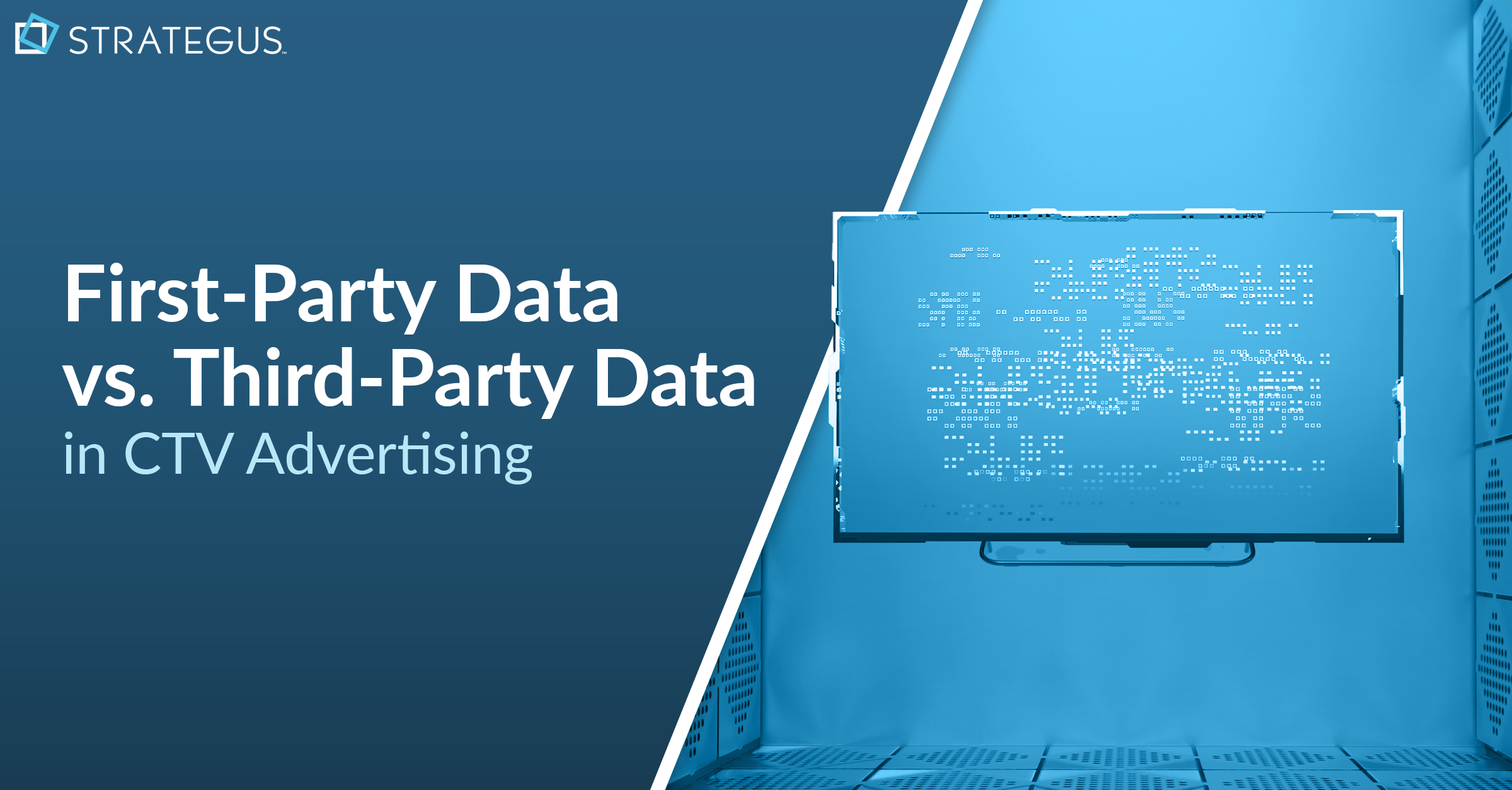
In CTV advertising, data is everything. But not all data is the same.
The difference between first-party and third-party data directly impacts how precisely you can target viewers, personalize ads, and measure performance.
This guide breaks down what sets them apart, and why it matters for your next campaign.
Types of Data in CTV Advertising
Here’s a side-by-side of the three main categories of data that marketers use — followed by a deeper dive into each.
|
|
|
|
|
|
Summary |
|
Data that’s shared between two businesses through a partnership, acquisition, co-branding, etc. |
Data aggregated and sold by external companies or data providers without a direct link to your business. |
|
Example |
A CRM list containing the contact information, interests, and demographics of customers. |
|
Insight into potential customers’ dietary habits, shopping preferences, and income gathered by third-party providers. |
|
Benefit |
Reliable, accurate, and unique info about a brand’s audience that’s compliant with data privacy regulations. |
|
Comprehensive information that acts as an additional data point for understanding the market as a whole. |
|
Limitation |
|
Dependence on the trustworthiness of a partner; potential privacy and compliance issues. |
Can be less accurate than first- and second-party data and is experiencing signal loss due to how it’s collected. |
1. First-Party Data Explained
First-party data is collected directly from the users interacting with a brand. It usually takes the form of prospect and customer data obtained via touchpoints like in-store purchases, website interactions, online purchases, surveys, and subscriptions.
This data is valuable because it’s sourced internally and provides unrivaled insight into a company’s target audience. That said, first-party data is limited to what an organization can collect from users willingly, which is why things like viewing preferences, major life events, and more often fall outside of this purview.
One of the most common examples of first-party data is a company’s CRM list, which is a lot like a souped-up Rolodex. Within a CRM, companies can gather user-specific information like:
- Contact information (name, email, phone number, address)
- Purchase history and transaction details
- Customer service interactions and support tickets
- Website behavior and engagement metrics
- Email open rates and click-through rates
- Demographic information (age, gender, occupation)
- Preferences and interests indicated by the customer
- Loyalty program data and rewards points
This data can then be used to create detailed buyer profiles and personalize ad campaigns to different segments.
2. Second-Party Data Explained
Second-party data is basically first-party data once removed. More specifically, it’s data that’s gathered internally by one organization and then shared with another closely related company.
Often, this is sourced from publishers, partners within the same supply chain, or through mergers and acquisitions. For instance, if a health food store cohosted an event with a kombucha brand sold in its own stores, the two companies could share their contact lists to promote the event — using the power of second-party data.
But second-party data can also be monetized for advertising. Consider a publisher like Netflix that has proprietary data about the shows their viewers like to watch, where they’re located, and how they engage with their platform. Once this data is shared to help advertisers build targeted ad campaigns, it becomes second-party data.
And this is exactly why there’s so much confusion across these terms. One man’s first-party data is another man’s second-party data, if you get what I’m saying.
The Current’s John McDermott explains:
“Second-party data is nearly identical to first-party data, in that it’s data a company collects through a direct relationship with a user. In the case of first-party data, it’s the relationship between a brand and the people who buy that brand. For second-party data, it’s a relationship between a web publisher and its readers, viewers, visitors, users, or customers.
In both cases, it’s a one-to-one relationship. The difference is merely a matter of perspective. When advertising executives talk about first-party data versus second-party data, they’re assuming the perspective of a brand marketer. The brand, the first party, supplies its own data, and combines it with data supplied by a publisher, the second party.”
And while second-party data provides a ton of value, marketers should still be wary of big tech’s walled gardens due to the constraints that they put on data portability and the regulatory scrutiny that they face.
More specifically, platforms like Google often make it difficult for advertisers to transact and measure performance across different channels by setting strict rules about how their data is used. Instead, these walled gardens constrain marketers to place ads within their closed ecosystems, limiting their ability to incorporate data from multiple sources and build comprehensive cross-channel campaigns.
3. Third-Party Data Explained
Finally, we arrive at third-party data, which is information acquired by external sources. This data belongs to neither publishers nor advertisers, but rather third-party aggregates.
Usually, this information is purchased from data management platforms and offers a broader view of the market. Advertisers rely on third-party data to identify new audience segments, enhance audience targeting strategies, and inform marketing strategies.
Popular data management platforms (DMPs) include Amazon, Mastercard, and Microsoft. That’s right — the companies that many of us rely on daily to buy groceries and conduct business are, in fact, powerful data companies.
Common examples of the information these providers collect and share include:
- Demographic information: Age, gender, income level, and education.
- Online behavior: Browsing history, technology usage, purchase patterns, and engagement with digital platforms.
- Interests: Insight into consumer interests, hobbies, dietary preferences, and habits.
- Purchase history: Information about consumer purchases across different retailers and platforms.
Unlike first-party data, this information provides a macro look at the customer landscape. Competitors can access the same information by working with the same data provider. This also makes third-party data less precise than customer information gathered internally.
But by combining first- and third-party data, marketers can achieve a balance of precision and scale. Tactics include building look-alike audiences from your own internal data, enhancing your campaigns with creative that’s personalized to individual segments, and identifying cold leads who are ready to make a purchase based on real-time buying signals.
Where Does Retail Data Fit Into This
Another category that can fall into any of the buckets detailed above is retail data. Retail data describes the customer information collected by major commerce brands like Walmart, Kroger, and Amazon.
This can include:
Customer profiles with basic demographic information (age, gender, location) and contact details (email, phone number)
Website and app activity ranging from browsing history, cart abandonment rates, and click-through rates on online platform
Purchase history with detailed records of past purchases, including dates, products, quantities, and amounts spent
And More.
When retailers use shopper data to engage existing customers (like Kroger sending personalized coupons), it’s first-party data. When shared with brands to reach new audiences, it becomes second- or third-party data.
This data is far more valuable than cookies because it’s tied to real purchases, not assumptions.
That’s why retailers are becoming data powerhouses. Amazon holds the largest pool of shopper data and went all-in on programmatic CTV. Walmart is growing its CTV reach through its deal with Disney Advertising.
With stable identifiers like Unified ID 2.0, retail audiences are now seen as the future of programmatic. To unlock this value, choose a CTV partner with integrations across top retail platforms.
How All of This Relates to Signal Loss
Privacy laws like CCPA, Apple’s ATT, and the end of third-party cookies have pushed the industry toward a privacy-first model. While that’s good progress, it also leads to signal loss — the shrinking ability to access data for targeting and measurement.
This is mainly due to the industry’s reliance on second- and third-party data, now limited by privacy rules and increased regulation of tech platforms.
Still, brands aren’t powerless. There are ways to adapt.
Here are the levers that marketers can pull:
- First-party data: First and foremost, companies must prioritize first-party data collection and activation — something 71% of brands, agencies, and publishers are doing according to the IAB.
- Cookieless channels: It’s also a good idea to invest in channels that are less dependent on third-party data, such as CTV and social media.
- Alternative tactics: Alternative data collection tools like identity graphs and more compliant targeting tactics like contextual targeting should come into play.
- Data diversification through an open-internet approach: And finally, you’ll want to prioritize vendor-agnostic solutions that can incorporate multiple data sources to find your audience across a wide range of inventory sources.
All of these strategies are key to how we approach targeting and measurement at Strategus, which is why the industry’s transition towards privacy-by-design hasn’t presented any major obstacles for the agencies and brands that partner with us.
What Does This Mean for CTV Advertising
The cookieless era is here, and big tech’s data practices are under growing scrutiny. But brands that lean into first-party data and alternative tracking methods can stay ahead.
Christine Foster of Kroger Precision Marketing put it plainly: “Third-party cookies were never a good solution... First-party data remains the most trusted and effective.”
CTV is already built for this. It never relied on cookies, and ad buyers are now increasing CTV budgets in direct response to signal loss across other channels.
Prepare for a Cookieless Future With Strategus
To recap, there are three powerful sources of data in the digital advertising world: first-party, first-party, and third-party.
|
|
|
|
|
|
|
When you partner with Strategus, you get a blend of data, strategy, and execution. We start by understanding your brand, goals, and audience, then tap into every relevant source: your CRM, retail media data, publisher and DSP insights, and our network of 200+ data partners.
Together, we build custom audiences using data like Amazon shopper intent or Edmunds automotive signals to reach the right viewers.
From there, we act as an extension of your team: launching, managing, and optimizing your CTV campaigns with a mix of precision tech and hands-on strategy.
Take a look at our customer CTV targeting solutions below:
 Website Retargeting
Website Retargeting
Re-engage warm leads on the big screen and lure online shopper back to their abandoned carts. This keeps your brand top of mind after leads step away from the computer.
 First-Party Data
First-Party Data
Leverage customer data from your CRM to deliver personalized CTV ads directly to your contacts’ living rooms.
 Look-Alike-Modeling
Look-Alike-Modeling
Expand your reach by building custom lookalike audiences. This powerful tactic is our second-best performer for driving results.
 ACR Data Targeting
ACR Data Targeting
Reach specific households based on their TV viewing habits and interests for precise audience alignment. This could mean showing an ad for a Lexus convertible on its way to a golf course to a viewer who regularly watches live golf.
 Location-Based Retargeting
Location-Based Retargeting
Reconnect with users who‘ve visited your stores — or conquest foot traffic from competitor locations. Both are powerful tactics to translate physical touchpoints into digital engagement.
 Smart Audience Contextual
Smart Audience Contextual
Reach consumers actively researching your services by targeting viewers based on the websites they’ve been visiting and keywords they’ve been typing into Google.
 Amazon Data Targeting
Amazon Data Targeting
Leverage Amazon purchase data to reach consumers actively shopping for products related to your campaign. For instance, a person who often purchases gluten-free products may see and commercial for a local health store.
 Linear TV Extension
Linear TV Extension
Bridge the gap between your linear TV campaigns and CTV by targeting households exposed to your TV ads for increased reach and frequency. A combination of both mediums ensures that your efforts aren’t siloed.
Learn More About Audience Targeting
Frequently Asked Questions
How Is Third-Party Data Collected?
Third-party data providers collect information from various websites, apps, surveys, and offline sources. They aggregate browsing behavior, purchase history, demographics, and interests from many users. After collecting and organizing the data, they sell it to advertisers for targeting, segmentation, and broader market insights.
Why Is Third-Party Data Becoming Less Reliable Than First-Party Data?
Third-party data relies on cookies and indirect tracking, which often lacks accuracy. With new privacy laws and browser restrictions, providers face limited access to user behavior. As a result, advertisers see lower precision and higher risk of outdated or irrelevant audience segments compared to verified first-party data.
How Can You Combine First-Party and Third-Party Data for Better Targeting?
Marketers can upload first-party data into a platform, then overlay it with third-party data to find similar audiences or fill in missing insights. This combination improves accuracy while expanding reach. It also allows for better personalization and higher conversion rates across programmatic and CTV campaigns.
What Are the Top Ad Solutions That Don't Rely on Third-Party Data?
Top alternatives include contextual targeting, first-party CRM targeting, retail media data, and lookalike modeling from cleanroom integrations. Platforms like The Trade Desk, Amazon Ads, and CTV providers like Strategus offer solutions that prioritize privacy while still delivering precision through cookieless identifiers and behavioral signals.
How Do You Use First-Party Data in Advertising Campaigns?
Import first-party data from your CRM, website, or app into an ad platform. Use this data to build custom audiences, segment users, and personalize creative. You can retarget visitors, reward loyal buyers, or identify high-value prospects. This improves relevance and boosts campaign performance.
What Are 3rd-Party Tags and How Are They Used in Advertising?
Third-party tags are code snippets placed on a website to track user activity or serve ads. Advertisers use them to collect data, measure conversions, and retarget visitors across platforms. These tags often power programmatic campaigns by feeding user behavior into targeting algorithms.
What Are the Differences Between First-Party and Third-Party Tracking?
First-party tracking captures data directly from your site or app, using tools like cookies or pixels you control. It provides accurate, consented insights. Third-party tracking collects data from outside sources, often across unrelated websites, which can lead to privacy issues and less reliable targeting.
How to Leverage First-Party Data for More Accurate Lookalike Audiences?
Upload high-quality first-party data, like top spenders or loyal customers, to your ad platform. Use this as a seed audience to create lookalike models. The platform finds users who share similar behaviors or traits, allowing you to scale campaigns while keeping precision high.
What Is One of the Potential Benefits of Using Second-Party Data in Advertising?
Second-party data gives access to high-quality insights from trusted partners, like publishers or retailers. It helps expand your reach, discover new segments, and improve targeting accuracy without sacrificing privacy. It also gives you a new perspective on audiences beyond your existing customer base.
What Are the Top-Rated First-Party Data Targeting Solutions for Online Retailers?
Leading solutions include Salesforce, Klaviyo, and Shopify Audiences for email and CRM targeting. For programmatic and CTV, platforms like Strategus, The Trade Desk, and Amazon Marketing Cloud help activate retail data. These tools offer precise targeting using real purchase behavior and site activity.

Traci Ruether is a content marketing consultant specializing in video tech. With over a decade of experience leading content strategy, she takes a metrics-driven approach to storytelling that drives traffic to her clients' websites. Follow her on LinkedIn at linkedin.com/in/traci-ruether or learn more at traciruether.com.
Strategus is a managed services connected TV(CTV) advertising agency with over 60,000+ campaigns delivered. Find out how our experts can extend your team and drive the result that matter most.
Talk to an Expert
Table of Contents
Seeking a Custom CTV Strategy That Delivers?
What to read next
App Event Tracking: Tie Mobile App Activity to CTV Campaigns
Let’s say you’re running a CTV campaign for a personal finance app.
5 minutes read

Stop Guessing Who Your Audience Is — Let Their Apps Tell You
Connected TV (CTV) targeting often falls in one of two camps.
8 minutes read
See Who Bought After Your Ad + How Much They Spent
You can’t improve what you can’t measure. And for years, that’s been a major problem with TV advertising.
4 minutes read
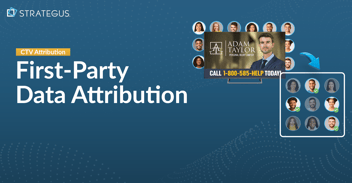
First-Party Attribution: Match Ads to Sales With CRM Data
The value of first-party data continues to grow.
7 minutes read



